
views
X
Research source
Find the row that shows metric measurements.

Meters are part of the metric system. You don’t want to read the imperial measurements, so look for the metric side. The metric system is usually the bottom row and will contain smaller numbers, while the imperial system is usually the top row and contains larger numbers. For extra confirmation, you can also check for letter labels that say “cm” or “meter”/“m” since those are metric measurements. Not every measuring tape will have letter markings, but if it does, they may be located on the far left. If you only see 1 row of markings, try flipping the tape measure over. The other side may contain more measurement markings. If you can only see imperial measurements or “inch” and “feet”/”ft” labels, you will want to get a different measuring tape.
Identify the millimeters.
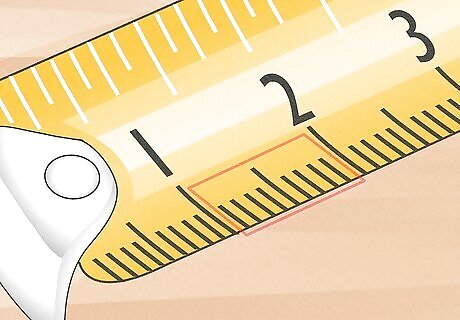
Millimeters are subunits that make up the meter. In the metric row on the tape measure, millimeters are the smallest markings and are not labeled. 10 millimeters make up 1 centimeter—this means you will see 9 millimeter lines between each centimeter number on the tape measure, since the 10th millimeter line is the next centimeter number. For example, you should see 9 shorter lines between “5” and “6.”
Look for the centimeters.
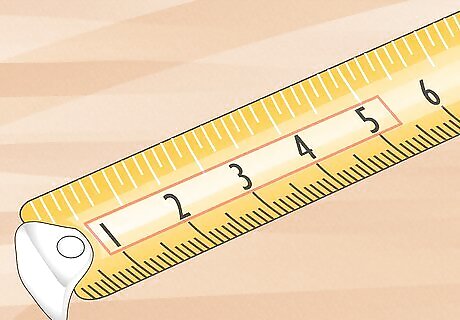
Centimeters are the next sub-unit leading up to the meter. They are the large and numbered markings on the metric row. You will also see a slightly longer line halfway between the centimeter makings. This line indicates the half centimeter, which is made of 5 millimeters. It is longer than the other millimeter lines, but shorter than the centimeter lines. It is also not usually labeled. For example, you should see a slightly longer line between “3” and “4.” This stands for 3 centimeters and 5 millimeters, giving you 3.5 centimeters.
Find the meters.
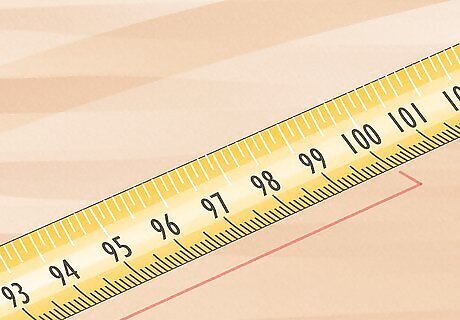
1 meter is made of 100 centimeters. That means that every 100 centimeter lines, you should see the meter marked down. For example, you should see a label for 3 meters after 300 centimeter lines. Norm Abram Norm Abram, Master Carpenter Being able to read a measuring tape is so important — and not just for skilled crafters, but for anyone doing even simple stuff around the house. The key is to get the basics: each number stands for meters, decimeters, or centimeters. The tiny marks in between show millimeters. Now, getting the measurements right isn't about having to love math. It's about understanding the precision that math brings to your work. So, even if numbers aren't your thing, really grasping how to use a measuring tape can help you be accurate and do excellent work on any project.
Measure something and record the measurement.

Now that you can identify and read metric lines, you’re ready to measure! Start from the far left of the measuring tape, which may be marked with a “0.” Look for the marking farthest to the right that lines up with the edge of what you are measuring, and record it. For example, measuring 205 centimeter lines will give you 2.05 meters. Measuring 4 millimeter lines after the 2 centimeter mark will give you 2.4 centimeters.
Assess whether you need to make a conversion.
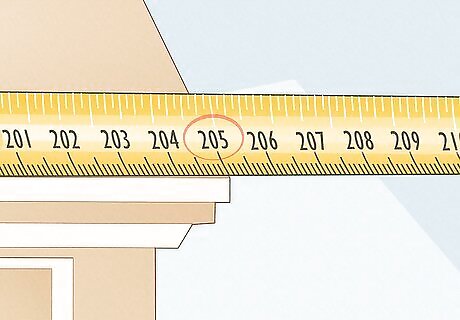
If your measurement is more than 100 centimeters, you have already read the tape in meters! For example, if you measured 205 centimeter lines, you should have already recorded 2.05 meters and can stop here—there’s no need to make a conversion. However, if what you measured is less than 1 meter, you will now need to make a conversion. For example, if you measured an object that was 13 centimeters and you want the measurement to be in meters, you’ll need to convert the centimeter measurement.
Make the conversion from millimeters to meters.

Use this conversion if what you measured is less than 1 centimeter. There are 1000 millimeters in 1 meter. So, divide the number of millimeters by 1000 to find out the number of meters. For example, if you wrote down a measurement of 5 millimeters, divide 5 / 1000 to get 0.005 meters.
Make the conversion from centimeters to meters.
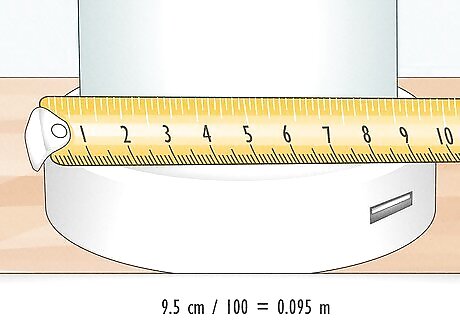
Use this conversion if what you measured is more than 1 centimeter. There are 100 centimeters in 1 meter. Divide the number of centimeters by 100 to find out the number of meters. For example, if you wrote down a measurement of 9.5 centimeters, divide 9.5 / 100 to get 0.095 meters.



















Comments
0 comment